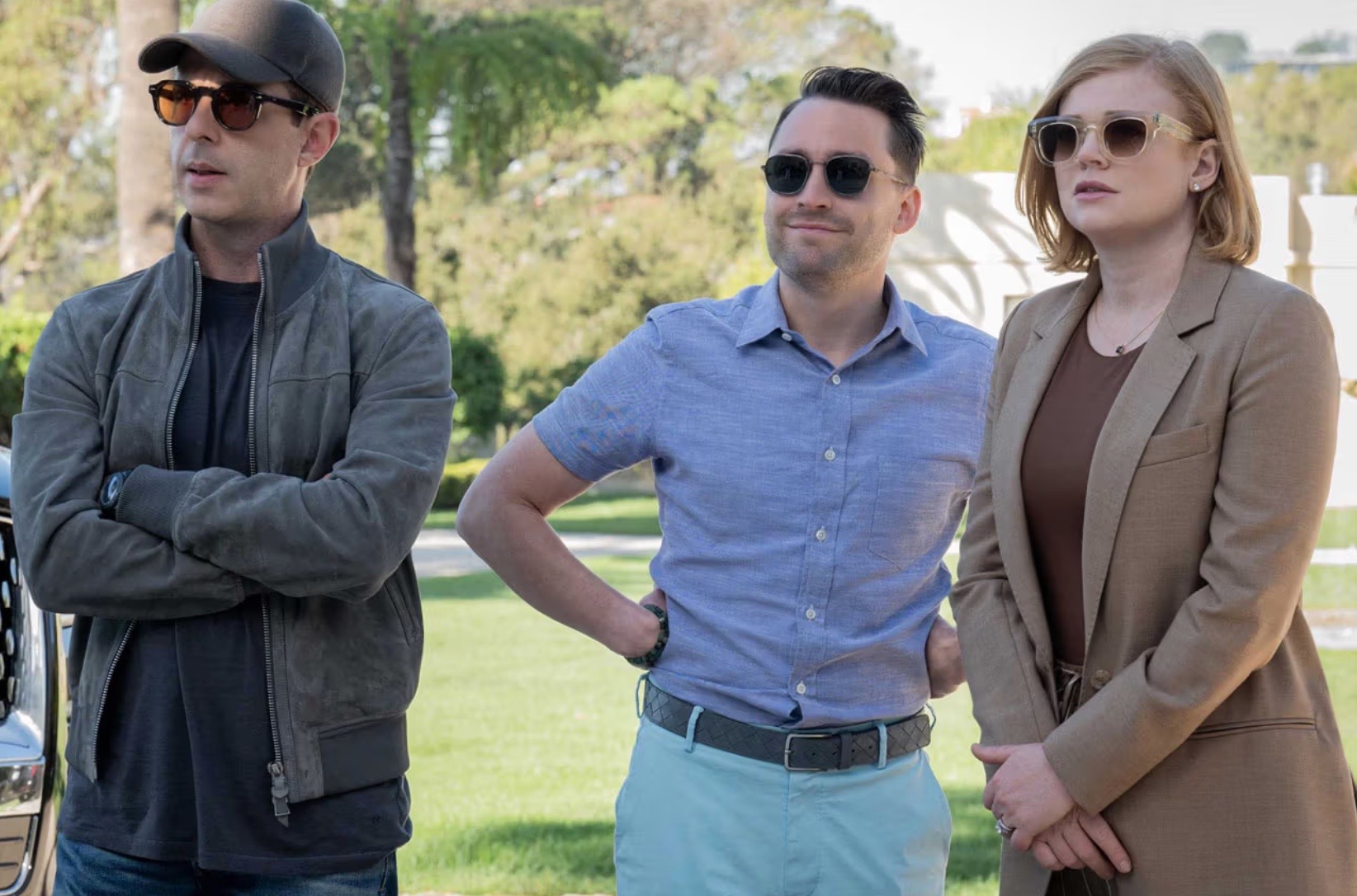
In current times, our fashion-conscious society has actually welcomed” peaceful high-end, “an enigmatic mix of casual beauty and luxury without obvious display screens of wealth. This pattern has actually recorded the hearts of style lovers, improving our understanding of dressing with grace and downplayed appeal. Style elegantly characterises peaceful high-end as the conference point of “Sienna Miller’s fascinating attraction from Anatomy of a Scandal’ and the Olsen twins’ off-duty trendy; it’s a battered Hermès Kelly Bag or a Max Mara financial investment coat tossed over an ancient set of classic denims.” From hit programs like Succession, to real-life occasions like Sofia Richie’s wedding event, this visual marries simple and easy design with apparent abundance. Numerous argue that peaceful high-end might restrict our style experimentation, favouring conventional and dull colours over the varied expressions of contemporary society.
Succession, the well-known tv series, has actually ended up being a specifying display of peaceful high-end through its carefully crafted outfit styles. Each character is decorated in clothes thoroughly chosen to expose their financial status and power-driven personality. The Roys, an image and power-obsessed household, embellish themselves in both offensively costly and apparently average clothes, an artistic mix of noticeable high-end and downplayed elegance. One notable circumstances from the program’s newest season includes the character Bridget, who ends up being the topic of ridicule for bring a “ludicrously capacious bag.” The bag does not have an obvious logo design, its distinct print clearly indicates Burberry, making it a prime example of logo design mania. In spite of its significant cost tag of ₤ 2500, it stops working to impress the Roy household, as its fancy and eye-catching nature renders it inappropriate for the world of peaceful high-end.
High-end in style
For many years, glamorous style has actually gone through an exceptional advancement, matching the altering tides of society and financial environments. In the early 2000s, traditional style was identified by an abundant display screen of logo designs, lively colours, and optimum styling. The attraction of obvious usage was at its peak, as showing off one’s abundance ended up being a fundamental pattern. The international economic downturn of 2008 brought about a considerable pivot in the high-end style landscape. While the ultra-wealthy continued to lead lives of luxury, they chose a more downplayed and less luxurious design in their sartorial options.
“Simplicity and neutrality ended up being much safer bets for designers as financial unpredictability dominated”
During the economic crisis, individuals still bought high-end items, however there was noticeable pushback versus obvious logo designs. Simpleness and neutrality ended up being much safer bets for designers as financial unpredictability dominated. Style reveals saw a supremacy of colours such as black, grey, navy, and white, showing the increase of minimalism and subtlety in high-end style.
Doing the same, the recession-core frame of mind made its existence understood even on the red-carpet of award programs. A visible absence of over the top jewellery and devices ended up being deliberate, signifying a level of sensitivity to the financial recession. The pattern towards larger bags, less devices, and attire duplicating additional exhibited a departure from the extreme high-end of the past.
Society’s tourist attraction towards the abundant
Today, there is an apparent boost in the fascination and tourist attraction towards the rich, characterized by the idea of peaceful high-end in high-end style. Style publication specifies peaceful high-end as an expression of “downplayed sophistication, mindful workmanship, and attention to information”– a language that just the fortunate really understand. These peaceful high-end brand names are referred to as the unique domain of the critical elite– a sign of status and wealth.
Throughout history, the ultra-wealthy were understood for loudly flaunting their status, showing their abundance through elegant costs and over the top screens of high-end. A considerable shift took place throughout the commercial transformation when the increasing bourgeoisie class accumulated inflated wealth, challenging the old nobility. The nouveau riche looked for to rise to the very same social tiers as the recognized old cash households, leading to a race to show much better taste and cultural elegance. This resulted in the growing of higher levels of cultural and intellectual capital as a way of distinction.
Peaceful high-end emerged as a declaration of self-confidence amongst the abundant, who no longer felt the requirement to show their wealth to others. Paradoxically, today, we observe a worrying pattern amongst those looking for to imitate the peaceful high-end design: On platforms such as Tik Tok, people actively look for suggestions and tutorials on how to embrace this unique visual, frequently with the specific objective of impressing others or manifesting a more fortunate way of life.
“The appeal of peaceful high-end perpetuates a discrimination versus the working class, developing a divide in between those who can pay for such high-end and those who can not”
In this pursuit, people try to validate their interest in peaceful high-end with numerous arguments. They declare usefulness in daily wear, convenience in the finer materials, and eco-consciousness through financial investment in staple pieces. Below these validations lies the unpleasant truth of classism and elitism. The appeal of peaceful high-end perpetuates a discrimination versus the working class, developing a divide in between those who can pay for such high-end and those who can not.
The culture of peaceful high-end and our destination towards the abundant in our society bring extensive ramifications. Classism and industrialism discreetly link within the attraction of peaceful high-end, providing a possible threat of perpetuating a system that positions wealth and benefit above empathy and inclusivity. In doing so, we might accidentally neglect the significance of supporting a more fair and understanding society, one that values people for their intrinsic worth, instead of for their product belongings.
Restricting grip of peaceful high-end
The increase of peaceful high-end as a fundamental pattern has actually unintentionally caused a suppressing of imagination and experimentation. Instead of commemorating the vibrancy and variety of contemporary society. this pattern boundaries us to a scheme of dull colours and conservative clothes options. In a time when we promote feminism, queerness, and gender-neutrality, it is significantly necessary that our style show these progressive worths. Peaceful high-end appears to stand at chances with this principles as it shies away from drama, magnanimity, and the vitality that style can stimulate.
The clothes connected with peaceful high-end accepts soft colours like cream, beige, navy, and black, intending to communicate a sense of classic elegance. While there is indisputable beauty in this fine-tuned visual, it accidentally sidelines the abundant capacity for style to serve as a medium of self-expression. Dylan Kelly, in his work for Hypebeast, astutely mentions that the event of “enjoyable style” has actually ended up being a rarity, resulting in a sense of dullness and uniformity for style lovers.
“As we commemorate creativity, style can end up being an effective tool to interact these worths, empowering people to reveal their special identities through their clothes options”
The requirement for a vibrant and varied style culture has actually ended up being even more important as we look for to break devoid of traditionalist standards and accept a more unbiased and inclusive world. As we commemorate creativity, style can end up being an effective tool to interact these worths, empowering people to reveal their special identities through their clothes options.
In conclusion, while peaceful high-end might hold its attraction for some, today’s society makes it vital to acknowledge its restrictions. By favouring soft colours and traditionalist designs, this pattern might unintentionally suppress our style experimentation and imagination. Instead of restricting ourselves to a narrow spectrum of elegance, it is time to break devoid of the grips of peaceful high-end and commemorate a style culture that cultivates inclusivity, self-expression, and an event of our special identities. Maybe, in doing so, it is time to revive the “ludicrously capacious bags” and other adventurous style options that commemorate the spirit of uniqueness and empowerment.
